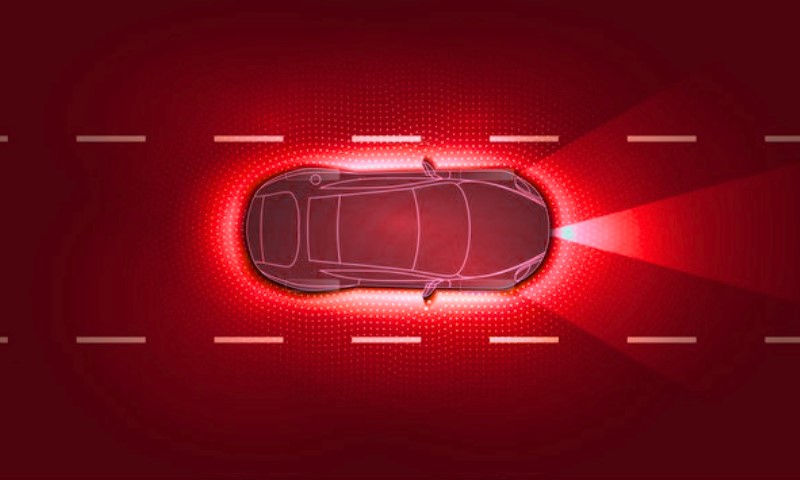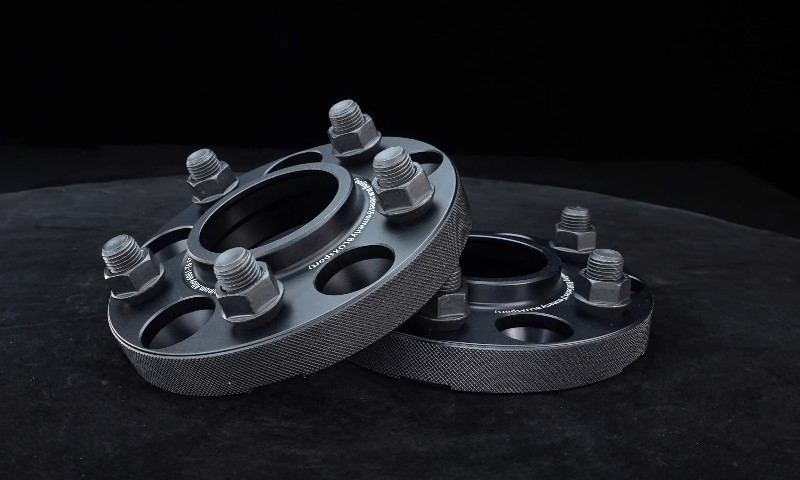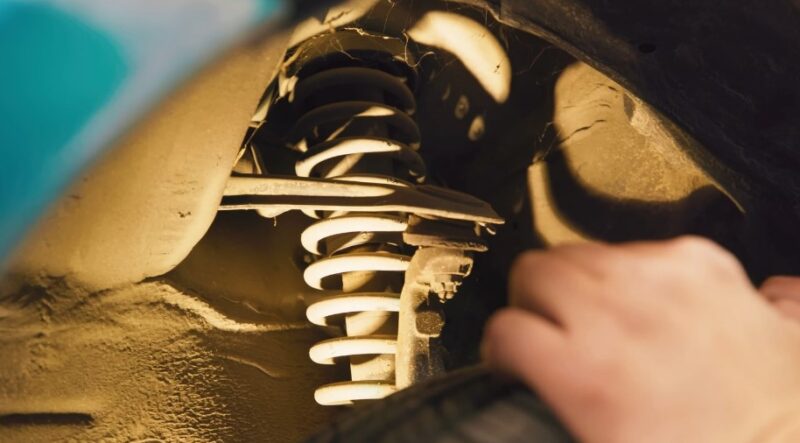
Share Post:
Potholes don’t just ruin your mood — they mess with your suspension in ways you might not notice until it’s too late. You hit one hard, everything seems fine, and then a few days later, your steering feels a little off. One tire wears faster than the others. There’s a faint clunk when you hit a bump. That’s how it usually starts.
The trouble is, suspension damage often hides. Nothing snaps or leaks right away. Instead, parts bend slightly, bushings tear just enough to matter, or a shock starts to seep fluid. And unless you know what to look for or bother to check at all, those small problems quietly stack up until your ride quality tanks, your alignment goes sideways, and your tires start wearing unevenly.
If you’ve recently driven on rough roads, gravel, broken pavement, or city streets that look like war zones, it’s worth checking your suspension before the issues show up at the worst time. Here’s how to do it right.
Table of Contents
ToggleWhy Rough Roads Mess With Your Suspension
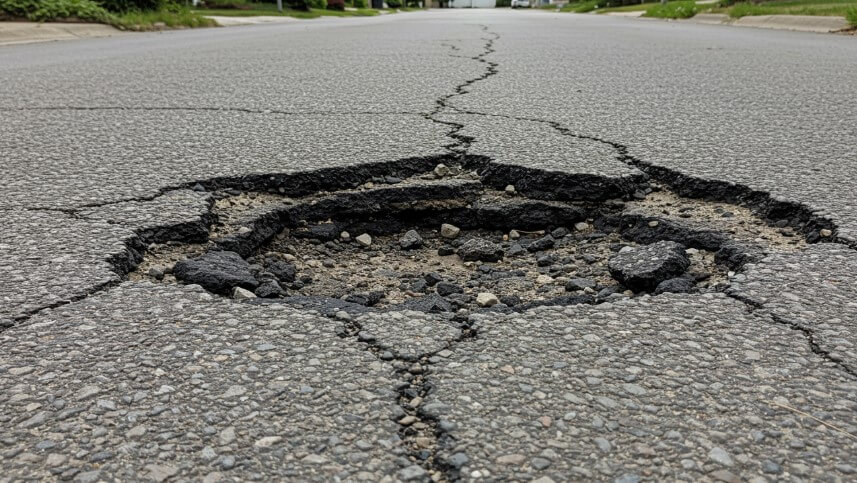
Your suspension is built to handle everyday driving, not constant hits from potholes and rough roads. When the surface gets bad, certain parts can take real damage.
| Component | What It Does | Common Damage from Rough Roads |
| Shocks & Struts | Control bounce, improve ride comfort, and stability | Leaking fluid, worn seals, internal damage |
| Control Arms & Bushings | Connect the suspension to the frame, and absorb minor movement | Bent arms, torn bushings |
| Springs (Coil/Leaf) | Hold up the weight of the car, absorb vertical motion | Cracks, sagging, breakage |
| Ball Joints | Allow smooth steering and up/down movement | Looseness, clunking sounds |
| Tie Rods | Connect the steering rack to the wheels | Looseness, misalignment |
| Wheel Bearings | Help the wheels rotate with minimal friction | Excess play, humming noises |
Signs You Might Have a Suspension Problem
Don’t wait for smoke signals — your car usually starts giving you clues if something’s off. Here are some of the most common symptoms to pay attention to:
1. The Car Pulls to One Side While Driving
If your steering wheel is centered but your vehicle slowly drifts left or right on a flat, straight road, it’s more than just a mild inconvenience.
That pull usually points to misalignment, but the deeper issue might be a bent control arm, damaged strut, or even shifted subframe geometry after a hard impact.
The longer it goes unchecked, the faster your tires wear unevenly, and the harder it gets to keep the car stable under braking or at highway speeds.
2. It Feels Like You’re Driving a Boat
If your car bounces excessively after hitting a bump, leans heavily during turns, or dips sharply when braking, you’re likely dealing with worn shocks or struts.
These components are designed to control body movement. When they wear out, the car starts to float, and you’ll feel less in control, especially during emergency maneuvers or high-speed lane changes.
It’s not just uncomfortable, it’s a safety issue. A blown shock can increase your stopping distance, cause your wheels to lose contact with the road during hard braking, and make the car unpredictable in corners.
Extra sign: Look for fluid leaking from the shock or strut housing, a visible indicator that the internal seals have failed.
3. Clunking, Rattling, or Popping Noises Over Bumps
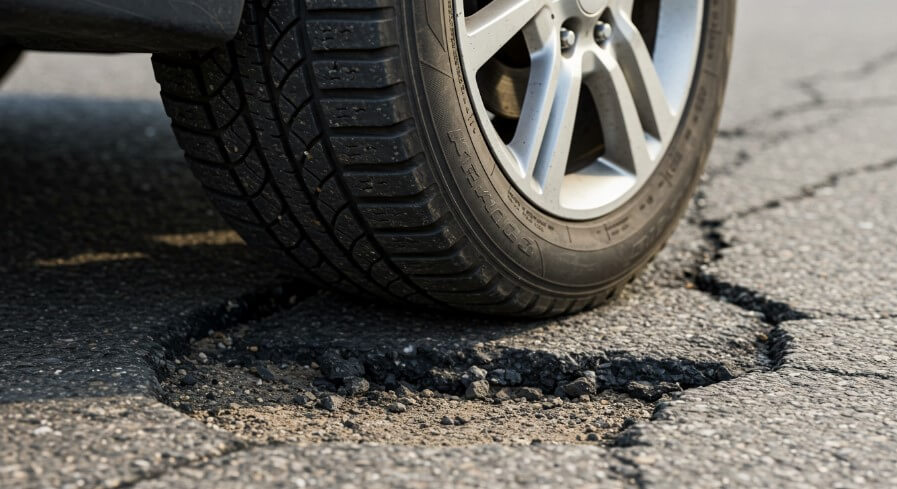
Hearing odd noises when driving over potholes, speed bumps, or uneven pavement? That’s often a sign of loosened or damaged suspension parts. Common culprits include:
- Worn ball joints (metal-on-metal pivot points in your front suspension)
- Torn control arm bushings (rubber isolators that absorb shock)
- Loose sway bar end links (help control body roll during cornering)
These noises usually come from one corner and get louder with repeated driving. A steady “clunk” over every bump?
That’s not just annoying, it’s telling you something’s worn or possibly broken. If ignored, some of these parts can fail, making your car unpredictable in hard turns or even affecting your ability to steer safely.
Pro tip: Drive over a small speed bump at low speed with your windows down — and listen. You’ll usually hear it better than you feel it.
4. Uneven or Unusual Tire Wear
Your tires are a window into your suspension’s health. When something’s off, you’ll often see it before you feel it. Here’s what to watch for:
- Cupping or scalloping: Alternating high/low wear spots usually caused by weak shocks that can’t keep the tire planted.
- Inner or outer edge wear: Caused by incorrect camber angles, often the result of bent components or sagging springs.
- Feathering: Tread blocks worn more on one side than the other, usually linked to poor toe alignment.
Ignoring this kind of wear doesn’t just kill your tires early, it’s a sign your suspension isn’t holding alignment correctly, which can compromise handling and safety.
What to do: Run your hand flat across each tire. If the surface feels uneven, it’s time for a closer look.
5. Steering Feels Loose, Wanders, or Reacts Slowly
Good steering should feel responsive and connected, not vague, sloppy, or delayed. If you notice increased play in the steering wheel, or the car seems to drift slightly even when you’re not turning, something’s likely worn or out of spec.
Possible issues include:
- Loose or worn tie rods: These link your steering rack to the wheels. When they get sloppy, steering feels disconnected.
- Worn rack-and-pinion mounts or bushings: These can cause your steering inputs to feel mushy or slow.
- Damaged control arms or bushings: These cause your wheels to shift slightly under load, especially during braking or acceleration.
According to information from a St. Louis Car Accident Attorney, mechanical failures like worn suspension or steering components can play a role in certain car accidents, especially when drivers lose control due to issues that could’ve been caught with regular inspections. In some cases, liability can extend beyond the driver, particularly when poor road conditions or recent repair negligence are involved.
What to Check (and How to Do It Without a Lift)
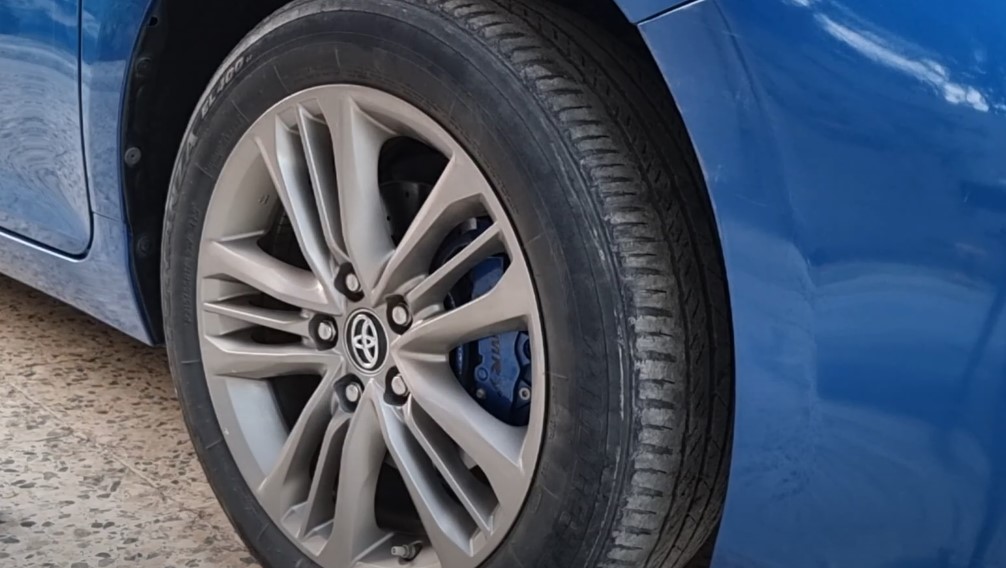
You don’t need a full shop setup to catch most suspension issues. A basic inspection of your driveway or garage can reveal a lot. Here’s how to break it down:
1. Visual Inspection (Parked, Engine Off)
Start with a walkaround and a flashlight.
Look for leaks around the shocks and struts. If you see oil streaks or buildup on the shock’s body, it’s probably blown.
Check the springs, especially coil springs, for cracks or sagging. Compare both sides. One sitting lower? That’s a red flag.
Examine bushings (rubber parts where components join). Torn or missing bushings can lead to metal-on-metal contact and horrible noises.
Look at the tires: Are they wearing evenly across all four? If not, you might have camber or toe issues linked to suspension wear.
2. Bounce Test
It’s simple, but it still works.
- Push down firmly on each corner of the car, then let go.
- If it bounces more than once or twice before settling, the shocks or struts may be worn.
3. Steering Feel (During a Drive)
While driving (preferably on a quiet, straight road):
- Let go of the steering wheel briefly to see if it tracks straight.
- Feel for vibrations, pulling, or loose steering, any of which could be tied to suspension or alignment.
- Hit a small bump and listen closely, do you hear any “clunk” or “pop”?
When It’s Time for a Mechanic
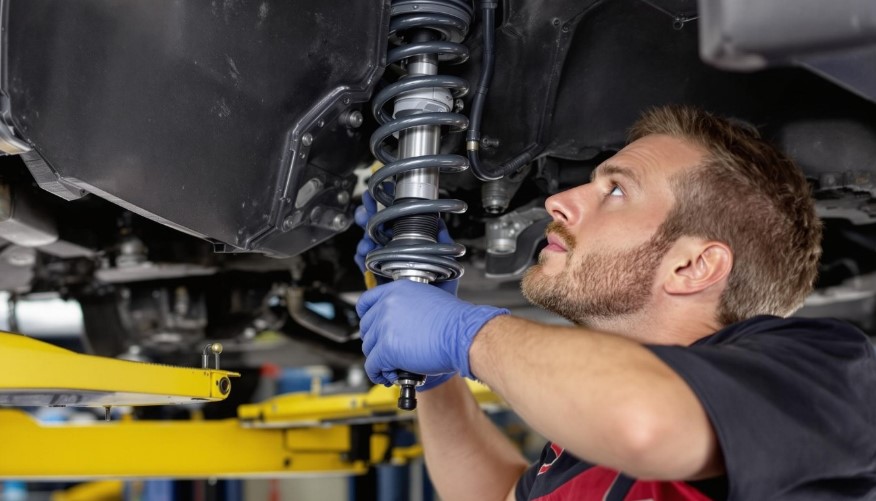
You don’t need to be a suspension expert to recognize when it’s time to get a second opinion. If any of the following show up, it’s worth booking a proper inspection:
| Symptom | Likely Cause | Urgency |
| The car leans to one side | Broken spring or shock | High |
| Loud clunking over bumps | Worn control arm bushings or ball joints | Medium to high |
| Steering is sloppy or delayed | Tie rod or rack issue | High |
| One tire wears out faster | Misalignment or a bent suspension arm | Medium |
| Vibration or wobble at speed | Bent wheel, damaged bearing, or alignment | High |
Letting these go unchecked doesn’t just affect comfort; it can lead to safety risks and more expensive repairs down the line.
Real-World Example:
Let’s get specific. A 2020 Toyota RAV4 went through a 20-mile unpaved back road in late spring, mostly washboard gravel and a couple of deep potholes. Everything felt okay right after, but within a week:
- Steering began pulling slightly right.
- The front passenger tire started to show inner edge wear.
- A faint popping noise started when making tight turns.
Inspection revealed a slightly bent lower control arm and a blown right front strut. Without addressing it, the uneven tire wear would’ve trashed the new rubber in under 2,000 miles. Catching it early meant a $300 fix instead of a $1,000 headache.
Tips for Preventing Future Suspension Damage
Rough roads happen, but you can minimize the hit your suspension takes by keeping a few habits in mind:
- Slow down for rough patches, especially if your vehicle has low-profile tires or a sport suspension.
- Don’t overload your car. Extra weight stresses springs and dampers way faster than you think.
- Avoid slamming into potholes, even if it means changing lanes or slowing down more than usual.
- Check tire pressure regularly. Underinflated tires make it easier for wheels and suspension to get damaged.
- Get an alignment check at least once a year or anytime your car starts pulling, after hitting a curb, or driving a particularly rough stretch.
Final Word
Your suspension works silently in the background, smoothing out the ride, keeping your tires planted, and your steering sharp.
But rough roads push it to the limit. If something feels different, even slightly, it probably is.
Catching the signs early can save you money, time, and the headache of a shaky ride that just keeps getting worse.
Your tires and your spine will thank you.
Related Posts:
- What No One Tells You About Florida’s Roads - 11…
- Chronic Electrical Problems in Your Vehicle - Fix or Sell?
- How to Reset Your Check Engine Light Without…
- How to Reset the Check Engine Light Without a…
- How to Deal with Uninsured Drivers After a Collision
- Passenger Rights After a Lyft or Uber Driver Caused a Crash




